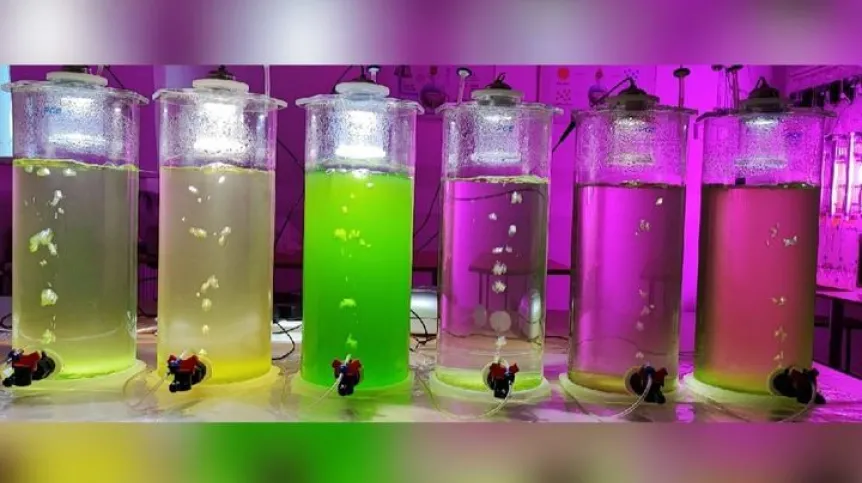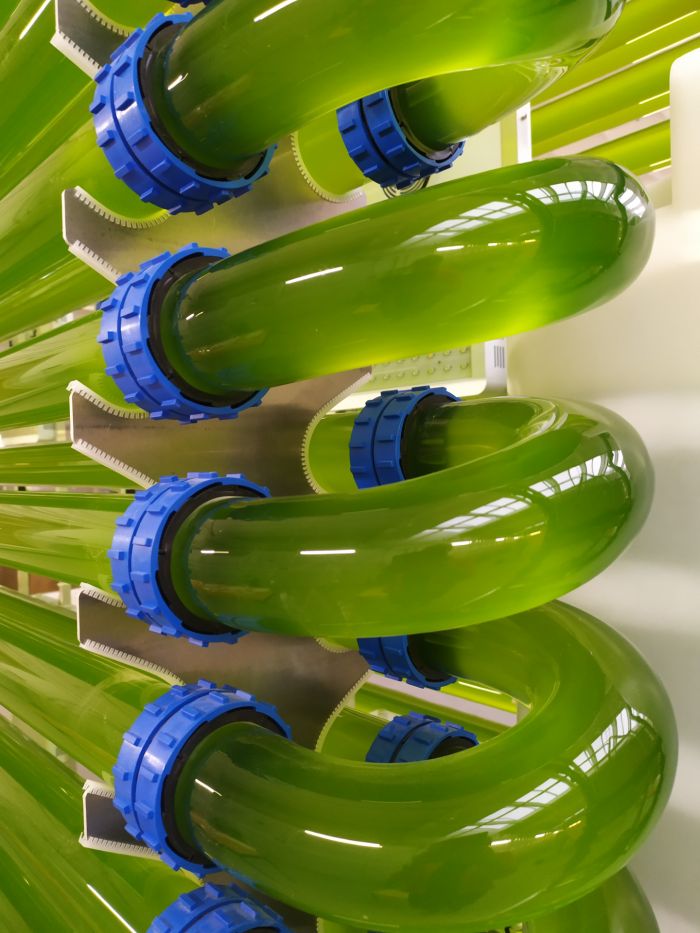
Scientists are working on a high-protein feed produced from algae. Microalgae could improve immunity and support the growth and development of animals. The team from the West Pomeranian University of Technology in Szczecin will receive PLN 2.6 million in funding for the production of biomass from microalgae.
The university’s Dr. Małgorzata Hawrot-Paw spoke to PAP - Science in Poland about microalgae feed. In the one-year project, she will grow and then process the types of microalgae that are best suited for high-protein feed. Researchers from her group will test at least a dozen algae species.
'Microalgae feed can be fed to cattle, pigs and poultry - there are no restrictions in this respect. Such feed can also be used in aquaculture (breeding of aquatic organisms - PAP). Even a small share of microalgae biomass in animal food has a positive effect on their growth and development. It increases resistance to diseases due to the antibacterial and antiviral compounds contained in the biomass. It also improves the quality of products - such as meat or milk,’ Dr. Hawrot-Paw says.
So far, the researcher has used microalgae as an energy storage and as a substrate for the production of heat, electricity and advanced biofuels.
'Microalgae biomass is rich in various ingredients - from lipids, polysaccharides and proteins. We do not use all the ingredients to produce energy, some of them could definitely be used in other sectors. Research on the nutritional values of microalgae and the health benefits resulting from their use is scarce, but the potential in this area is significant. There are many unresolved issues. It is difficult to resist the temptation to fill this gap, at least to some extent,’ she says.

Various species of microalgae have been selected, the production of which will be adapted to national conditions. According to Dr. Hawrot-Paw, the developed technology has a chance of being implemented on any farm, or on a larger scale by companies that would like to obtain such a product. The researcher adds that currently there are no such solutions on the market.
Searching for and finding alternative sources of protein is of great importance for food security. The demand for protein in animal husbandry is already high and will certainly increase in the coming decades.
'Currently, the protein ingredients used as feed or feed supplement include corn, fish meal, and primarily soybean meal. Microalgae biomass may provide a viable alternative to these ingredients, especially soy. Microalgae biomass as feed is not only a rich source of protein. It also has other valuable ingredients that constitute added value, such as amino acids, vitamins, antioxidants, desirable polyunsaturated fatty acids, and minerals,’ the researcher says.
She adds that not only is using such feed versatile but it is also sustainable, pro-environmental production with a lower carbon and water footprint compared to plants.
Visually, the production may generate similarly spectacular results as the previous cultivation of microalgae, the biomass of which was intended for the production of advanced biofuels. It will be based on photobioreactors (in the photos) full of emerald-green liquid, and biomass with extremely valuable nutritional properties.
The project is implemented under Measure M16 'Cooperation' of the Agency for Restructuring and Modernization of Agriculture.
PAP - Science in Poland, Karolina Duszczyk
kol/ bar/ kap/
tr. RL













